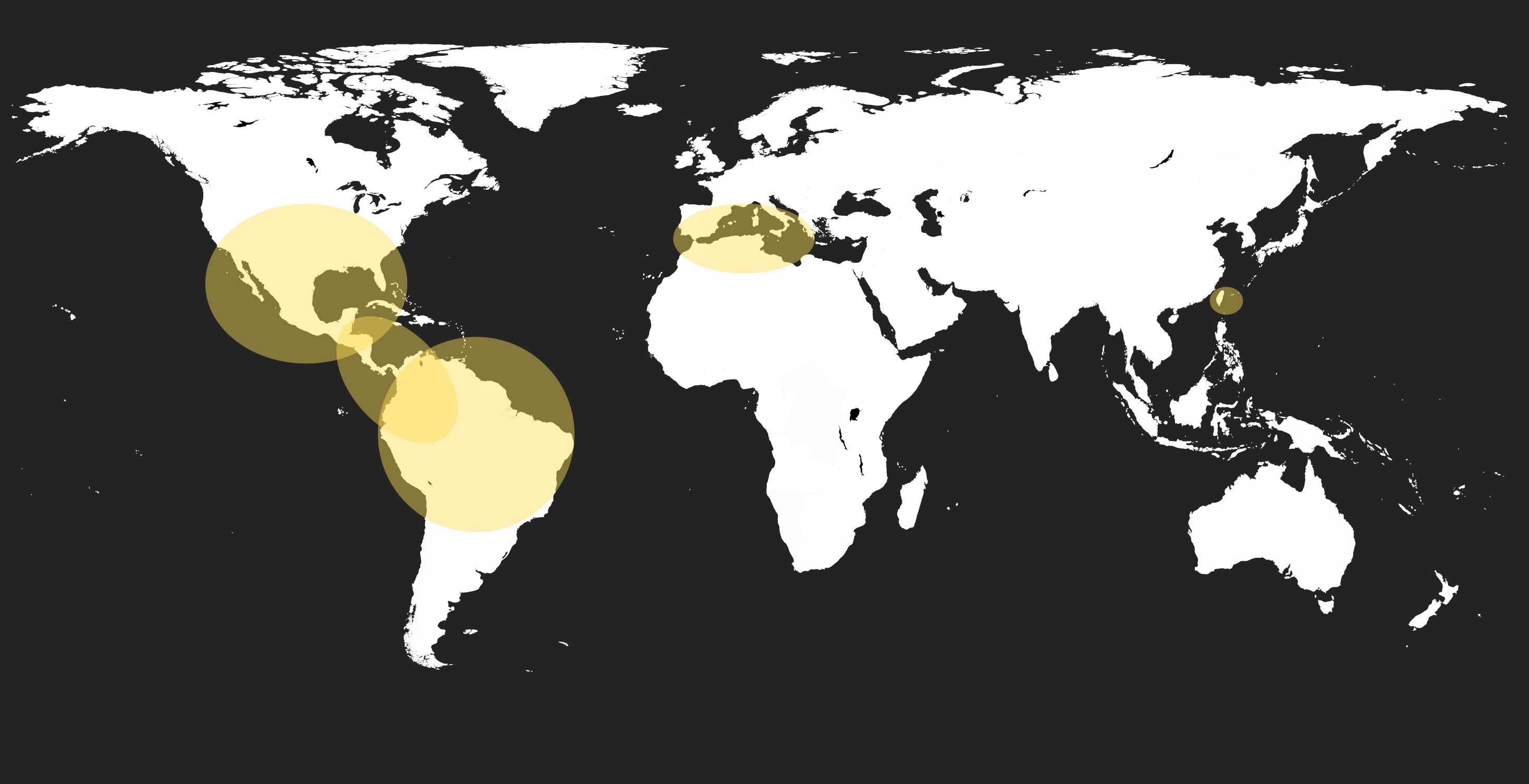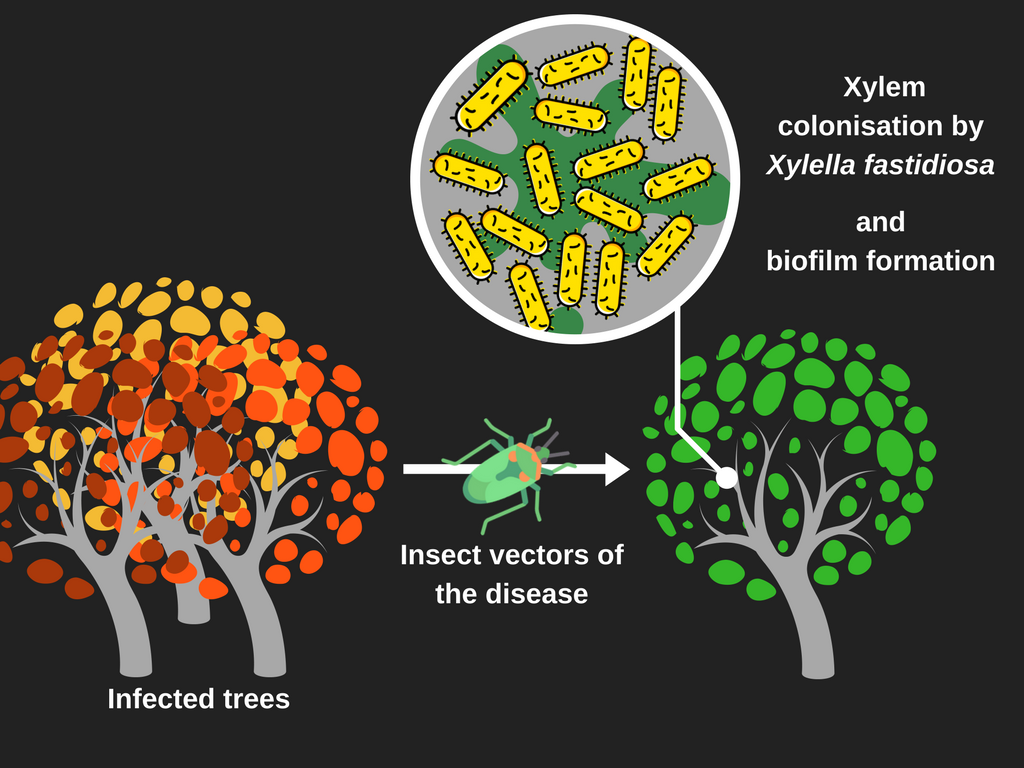| Line 9: | Line 9: | ||
The control of the movement of potential hosts and insect vectors and the eradication of infected material is considered the most effective method of limiting the spread of the disease in the European Union. But there is no method yet to cure the trees. | The control of the movement of potential hosts and insect vectors and the eradication of infected material is considered the most effective method of limiting the spread of the disease in the European Union. But there is no method yet to cure the trees. | ||
| − | [[File:T--Aix-Marseille--Xylellaworldwide.png| | + | [[File:T--Aix-Marseille--Xylellaworldwide.png|800px|thumb|Distribution map of ''Xylella fastidiosa'' worldwide<ref>1.Xylella fastidiosa (XYLEFA)[World distribution]| EPPO Global Database. Available at: https://gd.eppo.int/taxon/XYLEFA/distribution.</ref>.]] |
| − | + | ||
==References== | ==References== | ||
Revision as of 14:52, 19 October 2017
Xylella fastidiosa
Contents
Xylella fastidiosa is a bacterium that infects the xylem tissues of a wide range of plants.[1] This bacterium has been widespread in the Americas for many years and occurs also in Asia. The bacterium is associated with several diseases of crops of economic significance [2], and has a wide range of host plants comprising 312 species.
X. fastidiosa is transmitted from plant to plant by xylem sucking insects. The bacterium can persist in symptomless uncultivated plants, from which insects may acquire the bacterium and pass it to other crops. Symptoms of disease are only observed when xylem vessels are highly colonized by the bacterium[3]. The xylem transports water and soluble minerals, nutrients from the roots throughout the plant, and used to replace water lost during transpiration and photosynthesis. Xylem vessels are interconnected by bordered pits, which allow the passage of xylem sap, but block the passage of larger objects (such as bacterium) by a membrane.
The control of the movement of potential hosts and insect vectors and the eradication of infected material is considered the most effective method of limiting the spread of the disease in the European Union. But there is no method yet to cure the trees.

References
- ↑ Hopkins, D. L. Xylella Fastidiosa: Xylem-Limited Bacterial Pathogen of Plants. Annual Review of Phytopathology 27, 271–290 (1989).
- ↑ Simpson, A. J. G. et al. The genome sequence of the plant pathogen Xylella fastidiosa. Nature 406, 151–158 (2000).
- ↑ 1.Wells, J. M. et al. Xylella fastidiosa gen. nov., sp. nov: Gram-Negative, Xylem-Limited, Fastidious Plant Bacteria Related to Xanthomonas spp. International Journal of Systematic and Evolutionary Microbiology 37, 136–143 (1987).
- ↑ 1.Xylella fastidiosa (XYLEFA)[World distribution]| EPPO Global Database. Available at: https://gd.eppo.int/taxon/XYLEFA/distribution.


